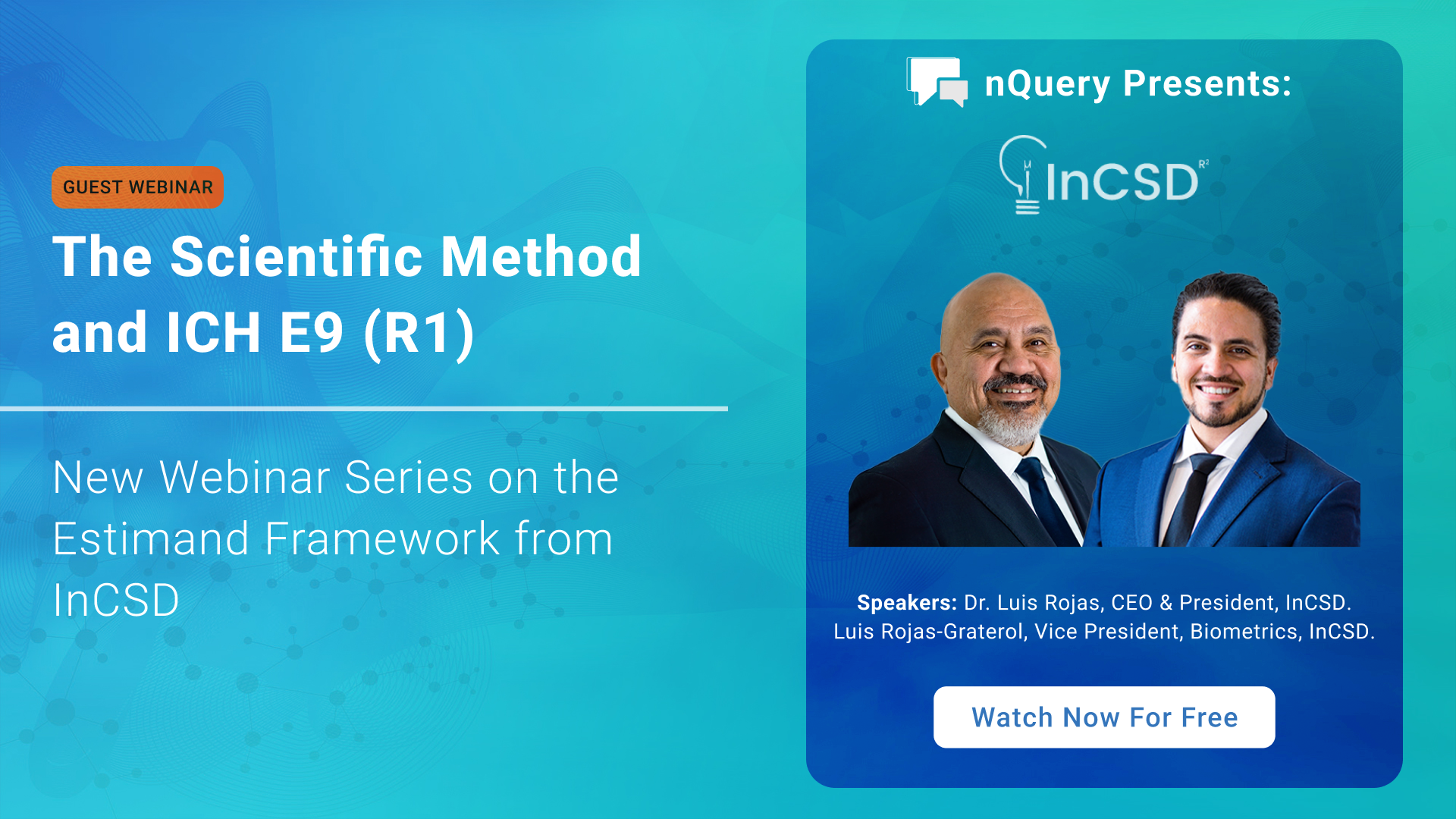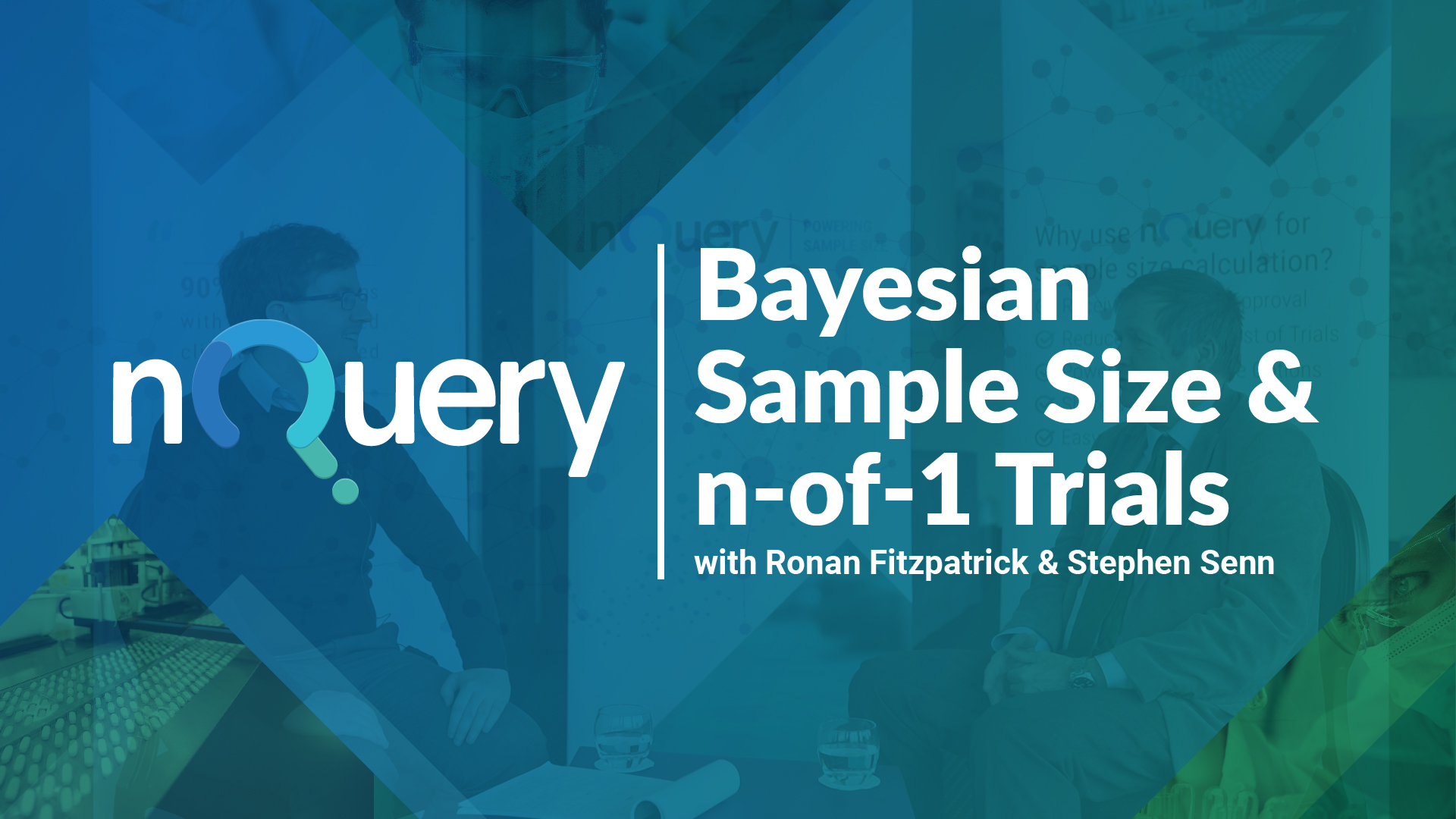About the webinar
In this webinar, we explored some of the issues faced when statistical power is used as the sole metric for trial success when conducting a sample size determination.
We showed how Bayesian assurance can be used as a complementary metric, that allows parameter uncertainty to be formally incorporated into the trial design.
We also discuss some of the limitations of using a traditional confidence interval as the measure for success and examine Mixed Bayesian/Likelihood HPD interval and consensus-based approaches to interval construction as potential alternatives.
Further below, you will find the webinar recording, slides and worked examples.
In this free webinar, you will learn about
- Underpowered or overpowered trials
(due to inaccurate initial parameter estimates)
- Using a confidence interval to measure trial success
- Using expert opinions to construct a prior for Bayesian Methods
More about the webinar
Sample size determination is an essential procedure when designing any phase II or phase III clinical trial. The sample size is often chosen as the minimum number that achieves a target power, where this target is often 80% or 90%.
However, the actual power is often conditional on many estimates such as the treatment effect size or nuisance parameters such as the standard deviation. A sensitivity analysis can be used to explore the effect of varying these parameters, but this ad-hoc approach has limitations.
Bayesian assurance (sometimes called Bayesian power) allows the trialist to formally address parameter uncertainty by assigning a prior distribution to one or more of the parameter estimates. Through this approach, we calculate the unconditional probability of trial success and thus, Bayesian assurance is often considered to be a more accurate representation of the “true probability of success”.
Confidence interval lengths are another common metric for success when designing a trial. However, these frequentist intervals are often misinterpreted and misunderstood. Bayesian credible intervals offer a more intuitive interpretation in addition to the ability to incorporate prior knowledge into the design.
Mixed Bayesian/Frequentist HPD intervals are a hybrid approach that exhibits both credible and confidence interval quantities. This is achieved through the use of an uninformative prior and is an attractive option for those who require a confidence interval in their final analysis but would like to take advantage of Bayesian properties.
For many, the requirement to specify a prior distribution is a barrier to using any Bayesian approach. This is particularly true when previous data is not available and expert opinions must be used instead.
The Sheffield Elicitation Framework (SHELF) is outlined as a protocol to help structure and formalise this elicitation process.
Finally, we look at a consensus-based approach to interval construction which allows the trialist to incorporate two differing expert opinions into the trial design.
Play the video below to watch
the complete recording of this webinar
Nothing showing? Click here to accept marketing cookies


Want to explore this data yourself?
Download the data as shown in the webinar
Looking for more resources?





















